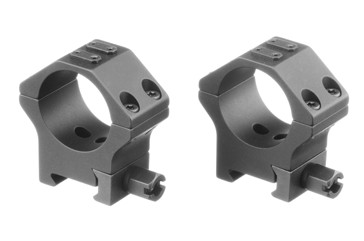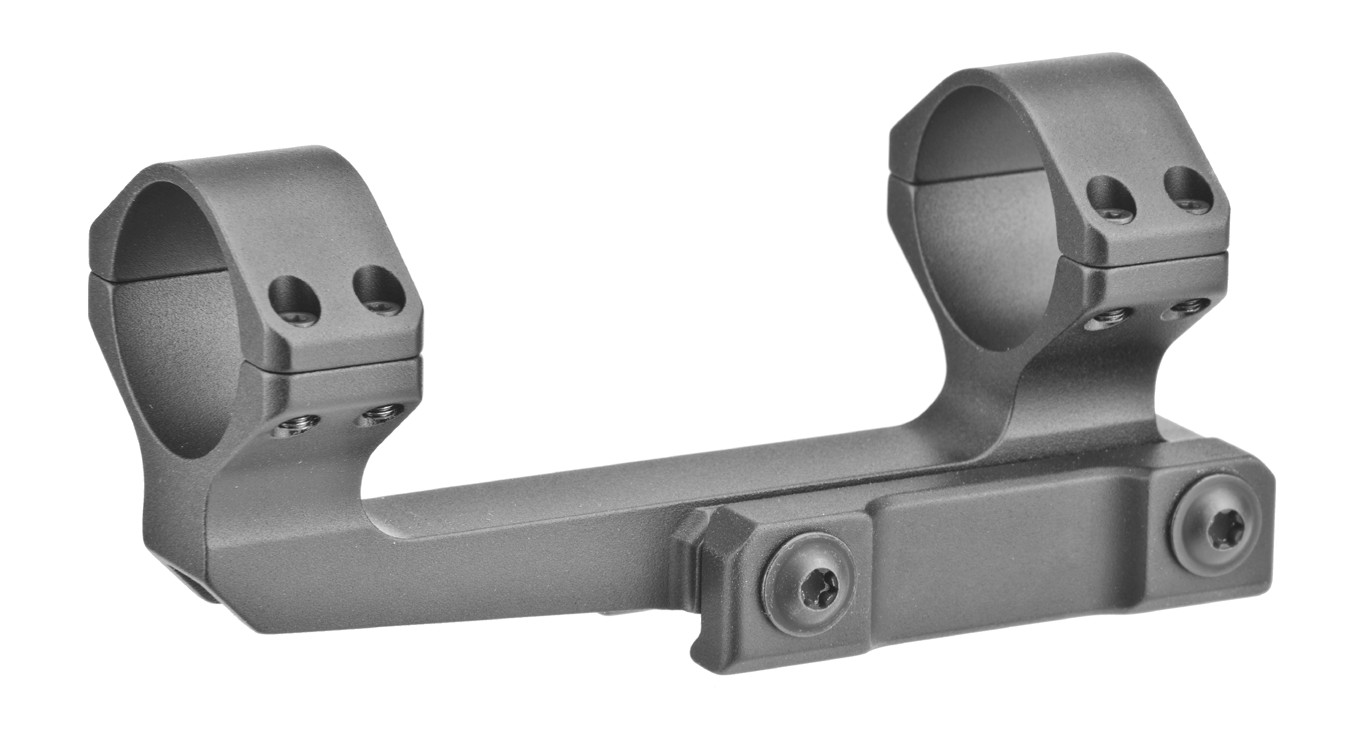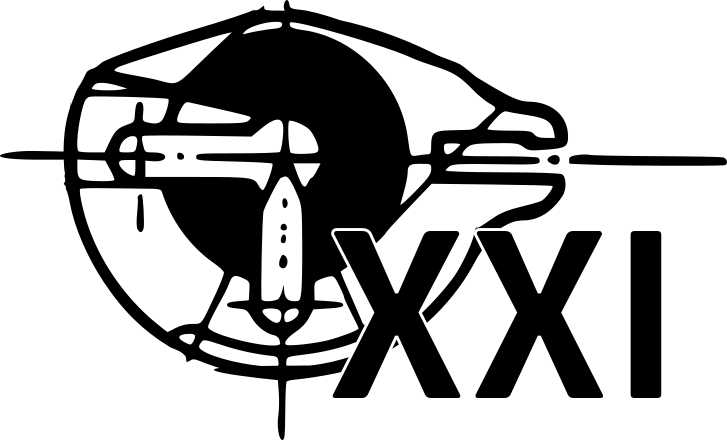Nota Bene: these guidelines are written for the lightweight K31 chassis “for the 21st century”, and the associated optics rail. It would be an error to generalise the advice to any other platform — it just would not work.
The right scope mount allows for natural and comfortable position of the shooter’s eye at the right height (in the axis of the optics) and the right distance from the ocular lens (so that the image seen through the scope takes all the space in the tube).
The adjustable cheek piece accommodates pretty much any mount height on the market. We have successfully tested the châssis with mount heights from 32 to 40 mm to full satisfaction (a bit higher or lower should be ok too). Specifically, AR15/AR10 standard heights — 35-38mm or 1.4-1.5″ measured from the top of the rail to the optics axis — fit the platform just right.
The right ocular distance is slightly more complex to ensure, as it depends on the choice of the scope. In a comfortable position, the shooter’s eye is ~25 cm behind the rail. This distance should be reached by the length of the ocular piece of the scope and by the scope’s optimal eye-relief.
In image:

T = total distance to the eye, approximately 25 cm
E = eye relief, depends on scope model, generally between 8 and 10 cm
O = length of the ocular part of the tube (subtract the width of the mounting rings)
For example, the Schmidt & Bender 3-20×50 PM II –
E = 9 cm
O = ~18 cm minus ring width (~2 cm) = ~16 cm
E+O = 25 cm
We are just at the right distance; classic rings or a standard (non-cantilever) monopiece mount can be used.

[Image (C) Era-Tac, certainly not under WTFPL]
Another example, the Schmidt & Bender 3-12×50 PM II –
E = 9 cm
O = 15 cm, and with 2 cm wide mounting rings, we have only 13 cm left
E+O = 22 cm = problemo! We are 3 cm too short
In this case a cantilever mount is necessary.

The extra distance M is to be provided by the mount itself.

[Another “(C) Era-Tac” image, again certainly not under WTFPL]
Generally, a mount with 50-60 mm cantilever can accommodate pretty much any modern scope, by fixing the mount further or nearer on the rail.
Our testing shows one cantilever mount model, which is particularly well suited for the chassis — it’s the Era-Tac Ultralight. (We are not associated with Era Tac in any way; the advertisement for their excellent product is totally uninterested.) It exists for 30 and 34 mm tubes, it’s robust, rigid and precise, comes with exceptional German quality and finish, and perfectly marries the light weight, high speed, low drag philosophy of the platform.
Contrary examples include standard (not Ultralight) Era-Tac or 32mm-high Spuhr mounts. As well as they may be made, they are hanging too low above the ejection port, and can affect reliable ejection in certain cases (e.g. full cartridges as opposed to spent brass).
ACHTUNG! Certain single piece cantilever mounts have built-in inclination (e.g. 20 MOA). The problem is that they are usually built to be mounted cantilevered forward (e.g. for AR15oids or Stgw57). The chassis mount goes cantilever rearwards — if there is inclination, it ends up the wrong way! Conclusion: do not use cantilever mounts with inclination. Get a flat 0 MOA mount, and create inclination with optics rail spacers (see the chassis assembly manual).
